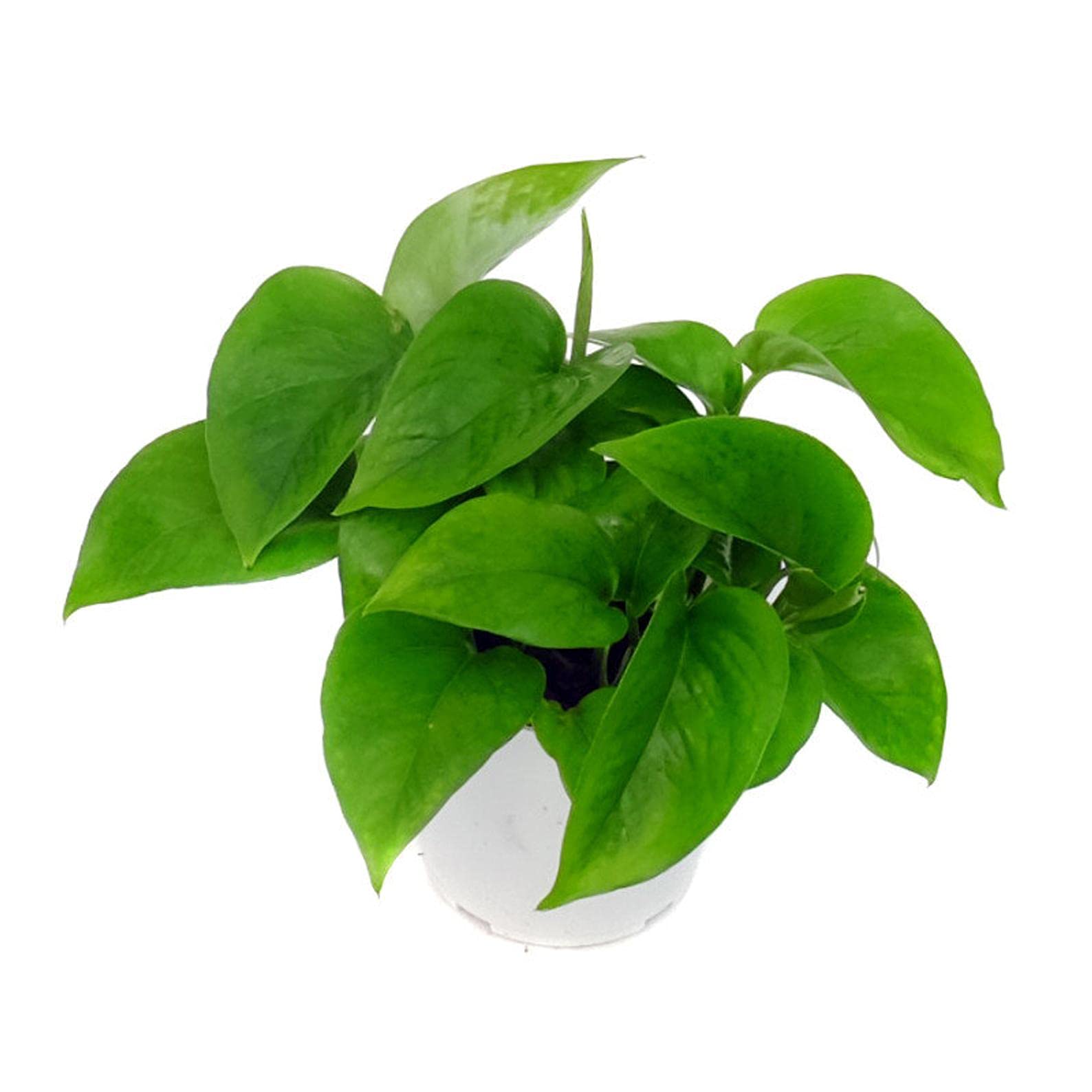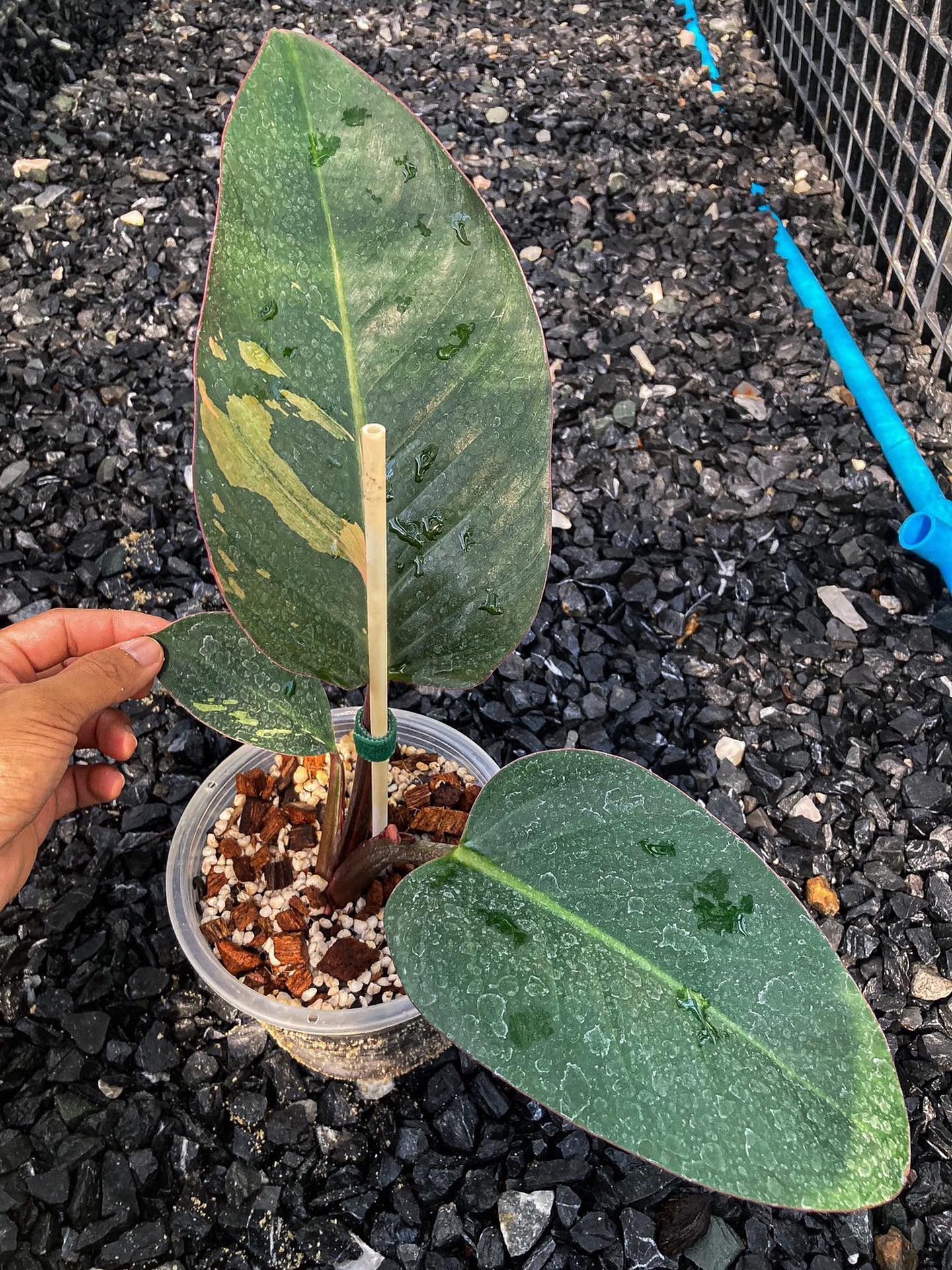The Araceae family belongs to the order Alismatales. This order contains mostly aquatic and semiaquatic flowering plants.
Overview of Araceae
Description
The Araceae, or arum family, is a family of monocotyledonous flowering plants. There are over 3750 known species in the Araceae family, making it one of the largest families of flowering plants. The family contains many common house and garden plants such as calla lilies, peace lilies, philodendrons, pothos, anthurium, and many others.
Members of the Araceae family can be herbs, shrubs, climbers or rarely small trees. They contain specialized leaves called phyllodes or phylloclades which allow them to thrive in low light conditions. The flowers are small and contained on a type of inflorescence called a spadix which is often surrounded by a modified leaf called a spathe.

Distribution
The Araceae family has a worldwide distribution but is most diverse in the New World tropics. They can be found in a wide variety of habitats from rainforests to deserts, however most species occur in wet tropical environments. Many species are adapted to specialized niches only found in tropical locations.
Araceae species play important ecological roles in tropical ecosystems. As herbs, they make up a significant portion of the understory vegetation. Their presence helps moderate humidity and air temperature at ground level. Many Araceae also have symbiotic relationships with animals that pollinate their flowers.
The Order Alismatales
Overview
Alismatales is an order of flowering plants that includes mostly aquatic and wetland species. Well-known families in this order include the Alismataceae (water plantains), Araceae (aroids), Hydrocharitaceae (frogbit family) and Tofieldiaceae (tofieldia family).
There are currently 16 families recognized within the Alismatales comprising around 4500-5000 species. Most species in the order are monocots, meaning they have one embryonic leaf. Alismatales belongs within the broader group of monocots called commelinids.
Species within Alismatales generally inhabit aquatic or marshy habitats. Many have specialized features such as aerenchyma tissue, floating leaves, and underwater pollination mechanisms that allow them thrive in wetland environments. Several families like Araceae contain orchid-like epiphytes.
Evolutionary History
The Alismatales order diverged from other flowering plant lineages around 134 million years ago during the Early Cretaceous period. Molecular evidence suggests the order originated on the supercontinent Gondwana during its breakup.
The Araceae are considered the most evolutionarily derived family within the Alismatales order. They emerged later than other Alismatales families. The earliest definitive aroid fossil dates to around 70 million years ago. By the Eocene period, aroids had diversified into many recognizable modern genera.
Today, the greatest diversity in the Alismatales order is found in tropical regions. However, the order likely originated in more temperate southern latitudes before warmer equatorial climates developed. Families like Araceae came to prominence more recently as tropical wetlands expanded.
Key Characteristics of Alismatales
Plant Morphology
Species within the Alismatales share a suite of anatomical and morphological characters. Most have linear or oblong leaves with parallel venation. Their small flowers are often arranged in racemes, panicles or pseudanthia and subtended by leaf-like bracts.
Many Alismatales including the Araceae possess specialized calcium oxalate crystals called raphides within their tissues. These needle-like crystals likely serve as a defense mechanisms against herbivores.
Reproductive morphology also unites the order. Alismatales flowers tend to be bisexual or unisexual. They usually contain 6 tepals arranged in two whorls of three. The ovary position is superior while the stigma shape ranges from disk-like to lobed.

List of the most sought after rare aroids in 2023
Habitat Preferences
A key characteristic of nearly all Alismatales families is a preference for growing in aquatic, wetland or riparian habitats. Species thrive in marshes, swamps, stream banks, floodplains and shallow waters.
Adaptations like aerenchyma allow oxygen transport to submerged tissues. Floating or strap-shaped leaves permit access to atmospheric CO2 for photosynthesis. Hydrophilous pollination methods overcome challenges presented by an aquatic lifestyle.
While moisture-loving, Alismatales species like aroids occur in an impressive range of habitats. Some grow as epiphytes high in the rainforest canopy. Others can tolerate seasonally dry tropical forests or even desert conditions. But most require abundant moisture for at least part of their lifecycle.
Symbiotic Relationships
The protected floral chambers of many Alismatales promote intimate symbiotic relationships with animal pollinators. These species offer heat, shelter resources in exchange for pollen transport services.
Beetles, flies, bees, wasps and other insects are frequent Alismatales floral visitors. But more unique associations also occur. Several Araceae genera utilize euglossine bees, thrips and fungus gnats for reproduction. And lemurs in Madagascar pollinate the flowers of the genus Typhonodorum.
Mycorrhizal fungi are also common symbionts with Alismatales families. These fungi colonize plant root tissues and facilitate uptake of water and nutrients, especially phosphorus. Their partnerships allow Alismatales plants to access marginal swampy soils.

Diversity Within the Araceae Family
Growth Forms
The Araceae family exhibits impressive morphological and ecological diversity. Members encompass a range of growth forms including rhizomatous herbs, climbing hemi-epiphytes, shrubs and small trees.
Herbaceous aroids often grow as perennials from underground stem tissue. Many propagate vegetatively from rhizomes, tubers, stolons or corms which allow them to quickly exploit habitat disturbances. These so called “disturbance adapted” aroids are ecological pioneers.
Other vining or scrambling members of the family display a hemi-epiphytic habit. They begin terrestrial but later climb into the forest canopy. There they exploit brighter light levels that permits faster growth. Aroids in the genera Philodendron, Monstera and Syngonium all demonstrate this growth strategy.
Less common are woody or arborescent members of Araceae. These shrubs and small trees often inhabit tropical forests and develop buttress roots for structural stability. Genera like Anaphyllopsis and Stylochaeton exemplify this unusual woody growth form.
Inflorescences
The unique inflorescences of Araceae species promote specialized pollination symbioses. The spadix and spathe structures protect and precisely regulate microclimate conditions inside the floral chamber.
Aroids frequently generate metabolic heat within their floral tissues, sometimes raising temperatures over 20 °C above ambient levels. Floral thermogenesis likely helps volatilize attractive scents that draw in pollinators from the surrounding landscape.
Precise temperature modulation and enriched respiration also provides energy rewards for resident insect partners. Some species even dynamically adjust their floral warmth via modulating mitochondrial densities in real time.
By tailoring floral environments to suit partners, Araceae obtain effective transportation for their pollen while rewarding animal visitors. This allows successful reproduction and ultimately generates exceptional family-wide diversity.
Economic Importance of Araceae
Food Crops
Many members of the Araceae family serve as staple food crops for cultures worldwide. The largest and most economically imports group are the tdrums or “true yams”.
Taro, originating in southern Asia, is the most produced tdarum globally with over 12 million tons harvested annually. However, ancient tdarum agriculture likely began in Africa with species like Guinea yam and yellow yam. These crops still serve as dietary mainstays in many developing countries.
Tdari also play a central role in tropical cuisine and culture. Poi, made from taro corms, provides the traditional carbohydrate source in native Hawaiian diets. And ornamental tdari feature symbolicly across Polynesian rituals related to hospitality.
Other Araceae genera also supply food calories. Species like giant taro, swamp taro and arrowleaf elephant ear are common minor crops. And water spinach, popular in Chinese cuisine, is now cultivated pantropically as a nutritious, fast growing vegetable.
Ornamental Plants
By far the most economically important members of Araceae today are ornamental house and landscape cultivars. Species like philodendrons, pothos, anthurium, aglaonema and syngonium rank among the most popular potted foliage plants sold worldwide.
The diversity of aroid ornamentals allows growers to develop cultivars with unique combinations of form, texture and coloration. Ongoing hybridization continues to produce novel varieties for the profitable foliage plant industry.
Many ornamental aroids also boast exceptional air purifying properties thanks to fast growth rates and large leaf areas. This ability further enhances their desirability as easy-care houseplants that help improve indoor environmental quality.
Conclusion
The Araceae’s membership within the Alismatales order alongside other aquatic and wetland plants is supported by both anatomical and genetic evidence. As the order diversified, the Araceae emerged as a dominant family in tropical wet forests by developing heat-producing symbergetic flowers that ensured effective pollination. This ultimately gave rise to impressive modern diversity across growth forms, habitats and geographies. And aroids continue ensuring human prosperity through ornamental variety and staple crop productivity to the present day.

